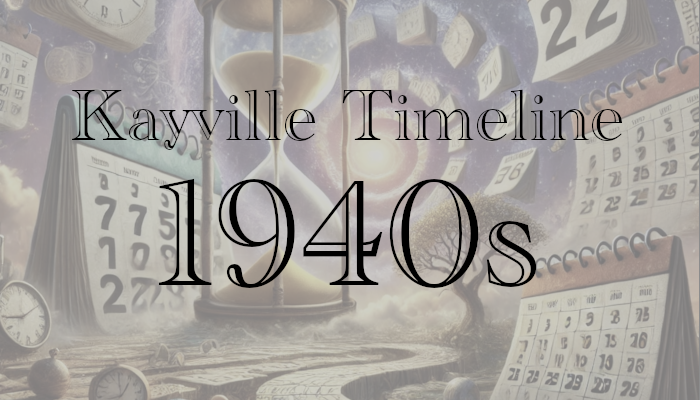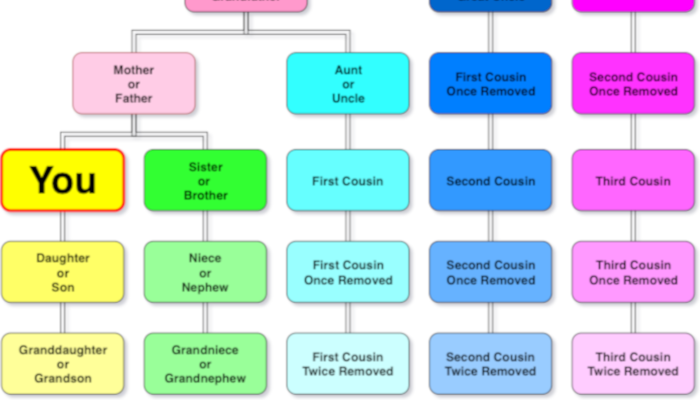The 1940s were a critical decade for Saskatchewan, characterized by wartime contributions, post-war economic adjustments, pioneering social programs, and shifts in the political landscape that would influence the province’s future direction.
During World War II, Saskatchewan contributed significantly to the national effort. Many residents served in the military, and the province supported war-related industries and food production. The war effort accelerated industrialization and increased the demand for agricultural products, boosting the province’s economy. However, the war also led to labor shortages and intensified the need for mechanization in farming practices.
After the war, Saskatchewan experienced economic fluctuations. Initially, there was a post-war boom due to pent-up demand and high grain prices, but this was followed by a recession in the late 1940s as markets stabilized and prices fell. The province’s economy continued to rely heavily on agriculture, but the challenges of the late decade underscored the need for diversification.
The 1940s saw significant social developments in Saskatchewan, particularly with the election of the Co-operative Commonwealth Federation (CCF) under Tommy Douglas in 1944. Douglas introduced pioneering social welfare programs, including comprehensive public health services which laid the groundwork for the future implementation of Medicare. His government also focused on rural electrification, improving infrastructure, and social housing, significantly enhancing the quality of life for many Saskatchewan residents.
The CCF’s victory in 1944 marked a shift towards more progressive and social democratic policies in Saskatchewan. The party’s emphasis on social welfare, economic planning, and public ownership of key industries reflected a broader post-war trend toward government intervention in the economy to promote social equity and manage economic challenges.
The 1940s also brought changes in the social fabric of Saskatchewan. The end of the war led to the return of servicemen and women, altering family dynamics and societal roles. The decade also witnessed movements towards greater recognition of women’s contributions, both on the home front and in professional spheres. Additionally, Indigenous peoples began to organize more actively for rights and recognition, setting the stage for future civil rights advancements.
Kayville Timeline (1940 – 1949)
1940
- Dan Popescul expands his poolroom business on the southeast corner of the main intersection to also include a store and a mechanic garage as well.1
- The Kayville Community Hall Co-op Association was formed with Nick Cojocari as president, Christ Brandt as vice-president, Karl Jackle Sr. as secretary, Conn Morse as treasurer. The directors of the association were Pete Juravle, Clemente Popescue and George Ursu Sr.. The association bought Eftim Ritco’s poolroom and bowling alley (which Eftim had moved into town in 1924) and renovated it to allow for seating and dancing.2
- Dan Popescul begins operating a trucking and grain hauling company in addition to his poolroom, store and mechanic garage.3
1941
- Dan Popescul adds to his poolroom, store, mechanic’s garage, trucking and grain hauling company on the southeast corner of the main intersection by acquiring a Ford Dealership and a John Deere Dealership.4
1942
- Standalone bell tower built at Saint Peter and Paul Romanian Orthodox Church. (It will be renovated 73 years later in 2015).5
1943
- George Cojocari purchases the blacksmith shop from Fred Schmidt Sr. who had been running it since 1930.2
- (abt 1943) Sam Ritsco purchased the butcher shop from Fred Schmidt Sr. when he left town.2
- (abt 1943) Pete Buburuz and Eli Satir bought the Cafe (originally built by Alex Bodnaresk in 1924) from Tom Chow and ran it for about two years.2
1944
- George Ursu Sr. purchased George Popescul’s store on the northwest corner of the main intersection, converts it into a hotel and called it “The Ursu Hotel”. He operated the hotel until 1947.6
1945
- Dan T. Kozak sells his store (formerly known as ‘The Store on the Hill’) after operating it for more than twenty years to Alex Ivanoff.7
- Pete Juravle purchases the Cafe (originally built by Alex Bodnaresk in 1924) from Pete Buburuz and Eli Satir who had run it for about two years. Pete Juravle ran the Cafe himself for about two years.2
- George Ursu Sr. closed the dray business he operated since the town began twenty-two years before. Following this a large group of others filled the space with the passing years: Sam G. Petrescue, John Dobra, Steve Donison, John Pana, Elie Juravle, Ted Koch, Dan Lupanko and Mike Juravle.2,6
- George and Mary Cojocari open a store on the northeast corner of the main intersection, in what was the store originally built by Dan Ritsco in 1924.2
- Kayville Co-op Association begins construction on a new larger store to replace the small house on the same site on the southwest corner of the main intersection which they had been previously using.2
1946
- (abt 1946) George Ursu Jr. opened a mechanic’s garage with an Imperial Oil gas station across the street from where the Credit Union stands today. He operated the enterprise until he sold in 1960.2
- George Cojocari, already the town Blacksmith and store keeper also opened a mechanic shop in the basement of the new Co-op store.2

- Telephone service came to Kayville when Christ Brandt and Karl R. Jackle travelled to Regina to petition for the service. The result was that a telephone exchange was built and telephone lines were run throughout the region and town. John D. Kozack became the first telephone operator to work in the small exchange manually directing and connecting calls. The exchange remained in operation for twenty-two years when a larger exchange was built in Ormiston in 1968 which also served Kayville.2
1947
- Saskatchewan had been enduring a frigid cold spell for a month with temperatures lingering around -43C when on February 1 a blizzard which would last for two days buried the province. All highways were blocked by drifting snow and railways were unable to run. It took a week before important supplies like coal for heating and food could move.8,9,10,11,12
- Pete Morse Jr. buys the Cafe (originally built by Alex Bodnaresk in 1924) from Pete Juravle who had run it for the last two years. Pete Morse Jr. then ran the Cafe himself for the next two years.2
- Saint Peter and Paul Romanian Orthodox Church was moved from the northwest of town into Kayville.13,5
 1947 St. Peter and Paul Church Moving Into Town
1947 St. Peter and Paul Church Moving Into Town
1948
- Dan Popescul sells his businesses and moves to Regina.8
- (19488 or 19472) Sigmund Brandt and Con Morse begin a partnership and open a store, garage, Cockshutt Implements Dealership and a car dealership in the building on the southeast corner of the main intersection that was previously operated by Dan Popescu for a John Deere Dealership, store and poolroom since 1937.2
- Saint Peter and Paul Romanian Orthodox Church consecrates a new cemetery beside the church’s new location. Old cemetery at the former location remains in-use.3,13
- (bef 1949) Sam Ritsco operated the butcher shop he bought from Fred Schmidt Sr. around 1943 for a short number of years before he in-turn sold it to John Cojocari.2
1949
- Pete Morse Jr. rents the Cafe (originally built by Alex Bodnaresk in 1924) to George Petrescu who operated it until the summer of 1950.2
- John Cojocari closes his butcher shop (originally opened by Fred Schmidt Sr. nineteen years earlier) after a small number of years.2
- Kayville Co-op Association begins selling groceries from the store built in 1945 on the southwest corner of the main intersection. George and Mary Cojocari who are operating a store on the northeast corner of the main intersection negotiate with the Co-op to provide Mary with a job in exchange for closing their store. Mary Cojocari (nee Banda) worked for the Co-op for the next thirty years until retiring.2
- 10 December 10, 1949 the Government of Canada passed the Trans-Canada Highway Act setting road standards, provided half of the funding for a national highway system and a completion date of 1956 (7 years).14
- “Dan and Rose Popescul”, Page 326, George Popescul, “Prairie Grass to Golden Grain: RM 70 Ogema & Surrounding Areas” (1982), ISBN 0-919-533-10-8, Ogema and District Historical Society ↩︎
- “Kayville”, Pages 30-33, Karl R. Jackle, “Prairie Grass to Golden Grain: RM 70 Ogema & Surrounding Areas” (1982), ISBN 0-919-533-10-8, Ogema and District Historical Society ↩︎
- Need citation ↩︎
- “Dan and Rose Popescul”, Page 326, George Popescul, “Prairie Grass to Golden Grain: RM 70 Ogema & Surrounding Areas” (1982), ISBN 0-919-533-10-8, Ogema and District Historical Society ↩︎
- “Related History” of Saint Peter and Paul Romanian Orthodox Church posted in Bell Tower at original cemetery ↩︎
- “George Ursu”, Pages 332-333, “Prairie Grass to Golden Grain: RM 70 Ogema & Surrounding Areas” (1982), ISBN 0-919-533-10-8, Ogema and District Historical Society ↩︎
- “Dan Kozak”, Pages 320-321, John Kozak, “Prairie Grass to Golden Grain: RM 70 Ogema & Surrounding Areas” (1982), ISBN 0-919-533-10-8, Ogema and District Historical Society ↩︎
- The Leader-Post, Feb 1 1947, Page 1, “Temperature Skids to Record Low”, https://news.google.com/newspapers?id=jMtTAAAAIBAJ&sjid=lzgNAAAAIBAJ&pg=3679%2C2786 ↩︎
- The Leader-Post, Feb 3 1947, Page 1, “Towns Left Marooned, Stock Toll Threatens”, https://news.google.com/newspapers?id=jctTAAAAIBAJ&sjid=lzgNAAAAIBAJ&pg=3186%2C194065 ↩︎
- The Leader-Post, Feb 4 1947, Page 1, “Regina Shovels Out From Under”, https://news.google.com/newspapers?id=jstTAAAAIBAJ&sjid=lzgNAAAAIBAJ&pg=4631%2C386739 ↩︎
- The Leader-Post, Feb 5 1947, Page 3, “Winds hinder Regina in Digging Out Job”, https://news.google.com/newspapers?id=j8tTAAAAIBAJ&sjid=lzgNAAAAIBAJ&pg=2506%2C561689 ↩︎
- The Leader-Post, Feb 6 1947, Page 1, “Coal Shortage Closes City Schools”, https://news.google.com/newspapers?id=kMtTAAAAIBAJ&sjid=lzgNAAAAIBAJ&pg=3324%2C718746 ↩︎
- “St. Peter and Paul Church”, Page 90, “Prairie Grass to Golden Grain: RM 70 Ogema & Surrounding Areas” (1982), ISBN 0-919-533-10-8, Ogema and District Historical Society ↩︎
- Berry, David. “Trans-Canada Highway”. The Canadian Encyclopedia, 04 January 2021, Historica Canada. www.thecanadianencyclopedia.ca/en/article/trans-canada-highway. Accessed 27 June 2024. ↩︎


 1947 St. Peter and Paul Church Moving Into Town
1947 St. Peter and Paul Church Moving Into Town

